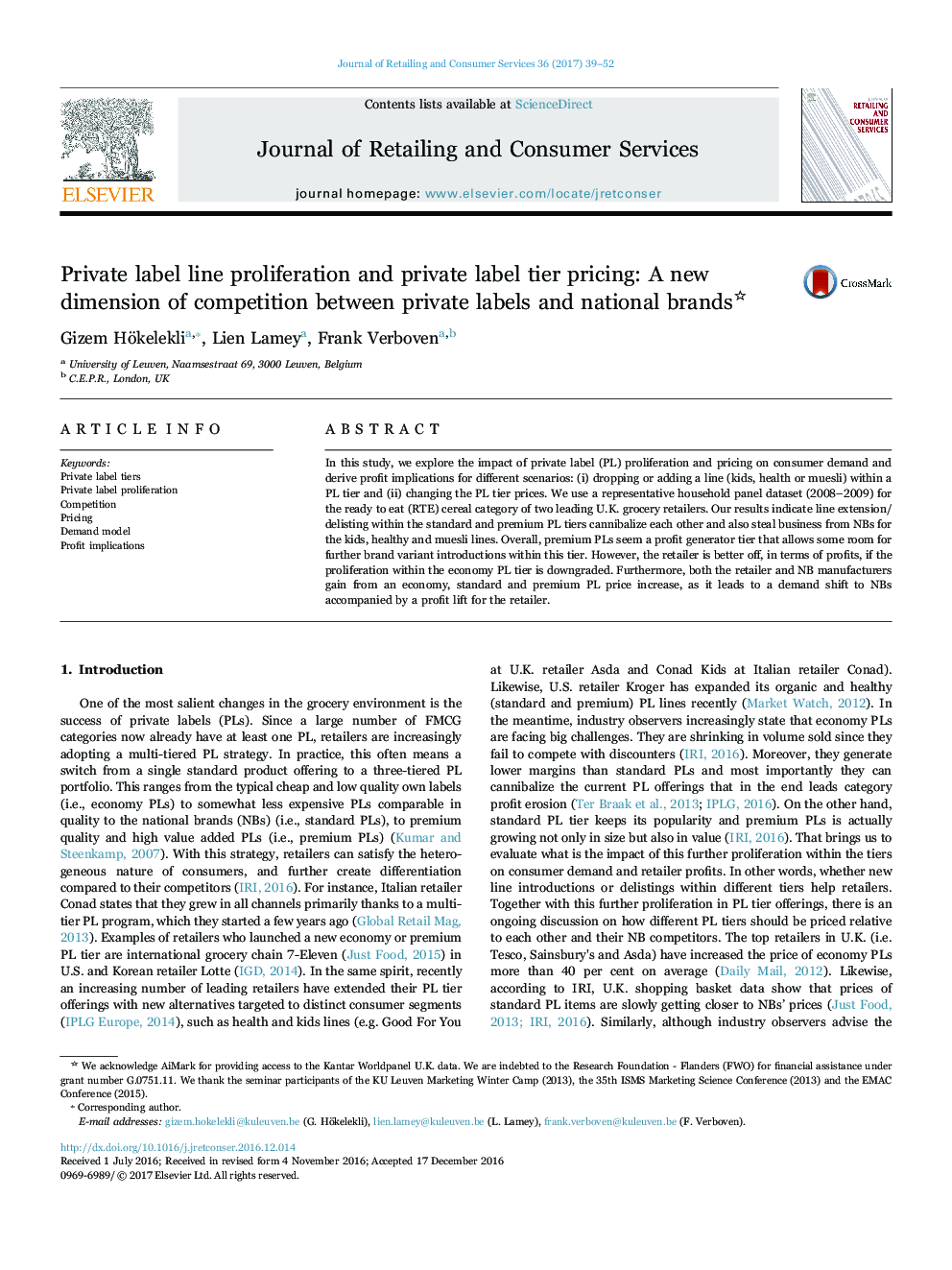| Article ID | Journal | Published Year | Pages | File Type |
|---|---|---|---|---|
| 5111293 | Journal of Retailing and Consumer Services | 2017 | 14 Pages |
Abstract
In this study, we explore the impact of private label (PL) proliferation and pricing on consumer demand and derive profit implications for different scenarios: (i) dropping or adding a line (kids, health or muesli) within a PL tier and (ii) changing the PL tier prices. We use a representative household panel dataset (2008-2009) for the ready to eat (RTE) cereal category of two leading U.K. grocery retailers. Our results indicate line extension/delisting within the standard and premium PL tiers cannibalize each other and also steal business from NBs for the kids, healthy and muesli lines. Overall, premium PLs seem a profit generator tier that allows some room for further brand variant introductions within this tier. However, the retailer is better off, in terms of profits, if the proliferation within the economy PL tier is downgraded. Furthermore, both the retailer and NB manufacturers gain from an economy, standard and premium PL price increase, as it leads to a demand shift to NBs accompanied by a profit lift for the retailer.
Keywords
Related Topics
Social Sciences and Humanities
Business, Management and Accounting
Marketing
Authors
Gizem Hökelekli, Lien Lamey, Frank Verboven,
